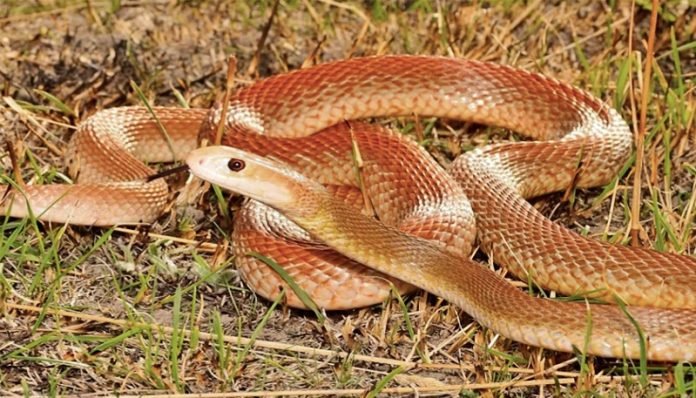
Contrary to popular belief, snakes can hear and react to airborne sound, according to a new study.
The researchers played three different sound frequencies to captive-bred snakes one at a time in a soundproof room and observed their reactions.
“Because snakes don’t have external ears, people typically think they’re deaf and can only feel vibrations through the ground and into their bodies,” says Christina Zdenek from the University of Queensland’s School of Biological Sciences.
“But our research—the first of its kind using non-anesthetized, freely moving snakes—found they do react to soundwaves traveling through the air, and possibly human voices.”
The study involved 19 snakes, representing five genetic families of reptiles.
“We played one sound which produced ground vibrations, while the other two were airborne only,” Zdenek says. “It meant we were able to test both types of ‘hearing’—tactile hearing through the snakes’ belly scales and airborne through their internal ear.”
The reactions strongly depended on the genus of the snakes.
“Only the woma python tended to move toward the sound, while taipans, brown snakes, and especially death adders were all more likely to move away from it,” Zdenek says.
“The types of behavioral reactions also differed, with taipans in particular more likely to exhibit defensive and cautious responses to sound.
“For example, woma pythons are large nocturnal snakes with fewer predators than smaller species and probably don’t need to be as cautious, so they tended to approach sound,” Zdenek says.
“But taipans may have to worry about raptor predators and they also actively pursue their prey, so their senses seem to be much more sensitive.”
The findings challenge the assumption that snakes can’t hear the sound, such as humans talking or yelling, and could reshape the view of how they react to sound.
“We know very little about how most snake species navigate situations and landscapes around the world. But our study shows that sound may be an important part of their sensory repertoire.
“Snakes are very vulnerable, timid creatures that hide most of the time, and we still have so much to learn about them.”
The research appears in PLOS ONE. Damian Candusso, a professor at the Queensland University of Technology is a co-author.



